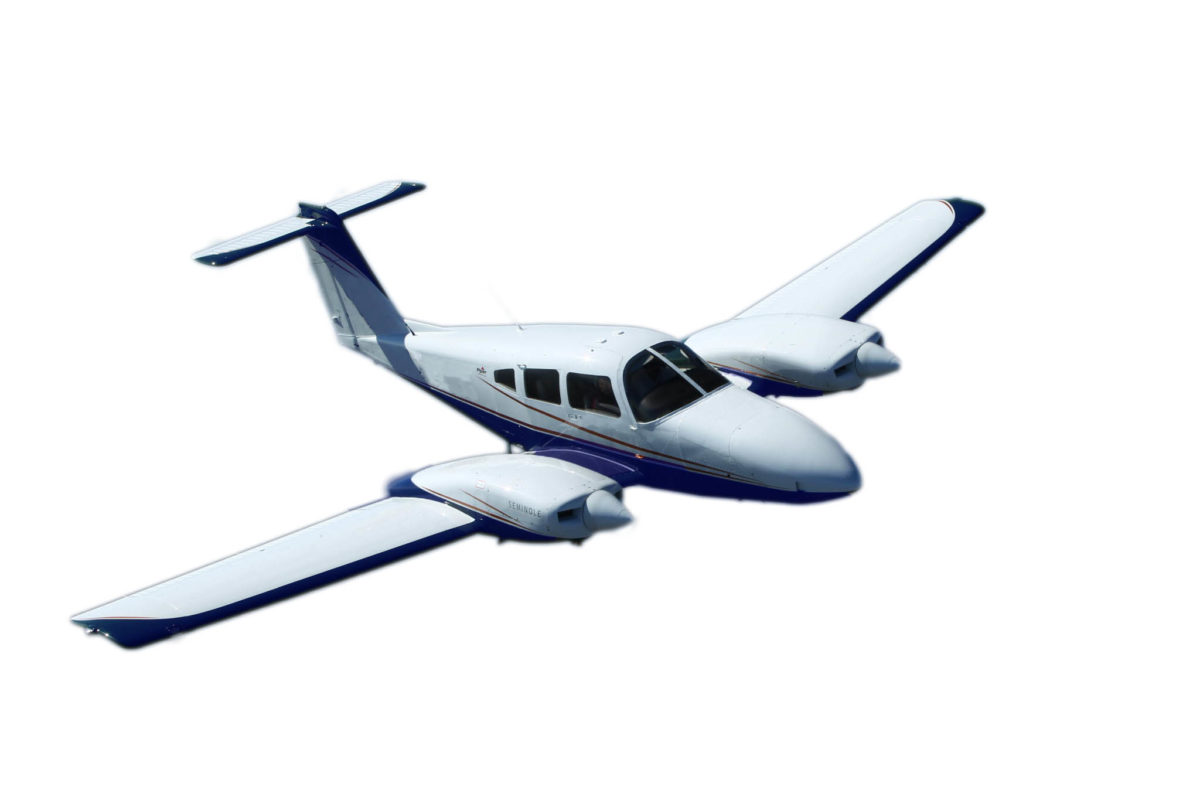
AERIAL PHOTOGRAPHY
Kucera International Inc. has had in-house aerial imaging capability since its founding and continues to provide aerial photography and a myriad of other types of aerial imaging as a primary service.
Annually, we fly over 500 individual flight missions around the world. We regularly perform photo missions in restricted airspace areas over airports, military bases, and other sensitive areas.
Aircraft
Our fleet of aircraft includes:
- One twin-engine Cessna 441 Conquest II turboprop
- Four twin-engine Piper Navajo Chieftain fixed-wing aircraft with dual sensor ports
- Two single-engine Cessna TU206 fixed wing aircraft
All of our aircraft are outfitted with GPS-based flight management and navigational systems for efficient and accurate mission planning and coverage.
Image Acquisition Systems
We capture aerial photography using Leica ADS100 SH100 (3) large format digital pushbroom cameras and Vexcel Eagle M1 100mm (3) large format digital frame cameras. The cameras are operated in manually leveled or automatic gyrostabilizing mounts and are linked to geodetic-grade Novatel SPAN airborne GPS/IMU systems.
Digital Orthophotography
All image georeferencing, aerotriangulation, color/tone balancing and, orthophotography production is performed in-house at Kucera International’s Headquarters in Willoughby, Ohio. Our dedicated orthocertified staff use automated techniques and visual inspections to ensure proper seam line placement and to reduce lean of vertical features.
CADASTRAL MAPPING
Kucera International has in-house cadastral mapping capability. Our staff is experienced in all aspects of cadastral conversion, ranging from straight CAD digitizing to full coordinate geometry (COGO) assembly and topological GIS database creation.
Our Process
Standardized procedures are used in the digital parcel compilation process for COGO data entry, placement of subdivisions and condominiums, and resolution of discrepancies. We have developed a number of batch processing routines to maximize our completion efficiency and quality, such as automated edge matching routines. As a result, the product is a seamless digital cadastral database.
The digital database is provided along with hardcopy checkplots, final plots of the data and compiled reports (e.g., errata, acreages, exempt parcels) as needed by the client.
Our cadastral project planning phase support services include: needs/cost-benefit analyses, existing procedure review, software recommendations, scheduling, and budget/implementation plans.

DATA EDIT/CONVERSION
All stereocompiled and vector map data is subject to finalization and quality control review initially on dedicated Zeiss CADMAP and Cardinal Systems VrTwo editing stations and subsequently in the target GIS/CAD environment.
Quality control of digital terrain and elevation model data is performed using 3D visuals, generated check contours, and Zeiss PROSA progressive sampling technology.
Editing and quality control of compiled contour and planimetric feature data is accomplished using batch and manual processes. These processes yield a seamless feature database. Our edit stations allow review of the vector mapping against a corresponding digital orthophoto image backdrop to verify the completeness and overlay accuracy of the vector data.
In the final edit and conversion process, translation tables are developed based on the specified design and reviewed with the client for approval. Conversions are performed using direct binary data translators (e.g., AutoCAD, MicroStation) or through DXF/DGN exchange formats (ArcGIS, Intergraph GeoMedia/MGE).
Metadata is FGDC-compliant or other specified form is produced directly through the GIS platform or using an independent program such as USGS Tkme.
GIS application work performed by our staff has included E911/addressing system development, hydrographic route system development, parcel-based impervious surface area calculations, watershed modeling, change area detection, GIS platform data overhaul, and a variety of other projects.
DRONE/UAV
Kucera International’s recent addition of certified drone pilots and the expansion of our drone/UAV department add to our client focused approach. Our drone team can offer more cost-effective, on demand and higher resolution solutions on projects suited for their use. Areas these solutions will have the greatest impact include:
Industries
- Construction
- Solar/Wind/Alternative Energy
- Electrical
- Oil/Gas
- Government (city, municipality, county)
- Engineering
- Industrial
- Parks and Services
- Police/Fire
- Real Estate/Land Development
Applications
- Inspections
- Mapping
- 3D Reconstruction
- Infrastructure
- Survey
- Orthophotography
- Marketing/Promo
LiDAR
Kucera International Inc. provides LiDAR services with our company owned and operated Leica ALS80 and ALS70 High-Performance Airborne LiDAR systems.
These systems provide a wide operational envelope of 650’ – 16,400’ above the ground. The adjustable field of view and wide-aperture modifications enable agile flight planning suitable for narrower high-density, corridor mapping projects to wide-area DEM collections up to 20,800’-wide per swath. Laser scanning rates of up to 200 Hz, effective pulse rates of up to 1000 KHz, and Multiple Pulse in Air technology of up to 6 pulses allow for high-density collections of up to 25 points per square meter in a single pass. The waveform digitizer module allows recording of digitized waveforms of the return signal for advanced vegetation and power line modelling. The system can be operated in sinusoidal, triangular, or raster scan patterns to meet project specification for point density, distribution, and overall homogeneity. The system is coupled with a NovAtel SPAN integrated GPS + inertial navigation system to provide the highest degree of positional and orientation angle accuracy needed for engineering-grade feature detection and terrain surface modeling.

ORTHOPHOTOGRAPHY
Kucera International has been one of the country’s largest producers of orthophotography since the mid-1980s. We currently produce tens of thousands of digital orthophotos annually in both color and in black and white at scales with pixel resolutions ranging from 1″=10′/0.1′ pixel to 1″=1000′/4′ pixel.
Our Process
Our digital orthophoto production is a multi-stage process involving image rectification and initial quality control review, automated processing of the rectified imagery, and final manual quality control review and edit.
Image rectification is performed on Inpho OrthoMaster and Z/I OrthoPro dedicated digital orthophoto production stations. The digital aerial imagery is pixel-rectified in a batch process to the DEM/DTM point grid using a high-grade radiometric interpolation, with resampling to the target pixel resolution performed with a bicubic or bilinear resampling algorithm.
After rectification, the imagery is tone balanced and processed into the final seamless image tiles using Inpho OrthoVista, an advanced orthophoto image processing technology. Blocks of rectified images are processed to a seamless overall image representation, from which coordinate-defined tiles and/or resampled imagery is copied/extracted and output in the appropriate format.
The aerial imagery is rectified to both the ground surface DEM/DTM and breakline data representing the bridge deck to generate an accurate image representation. “Lean” effects of more significant vertical features are minimized by using increased image overlap in the aerial photo acquisition and selecting/constructing optimal image views. Our Inpho OrthoMaster software also has automated routines for the generation of “true” orthophotography with complete lean elimination across the imagery.

PLOTTING/GRAPHIC DESIGN
Plotting
Kucera International produces high quality color aerial photo image plots up to 60 inches wide on a Canon Pro-6100S printer. The plotted imagery is water and fade resistant and is generally superior to photographic reproductions in color balance and vibrancy. A myriad of plot media is supported, including paper, vinyl, and mylar in various weights, grades, and textures.
For all image plotting projects, Kucera provides samples for client review and approval of color, contrast, coverage, scale, format, etc. before delivering the finalized plots. The plots are produced in soft-copy sheet surrounded with title information and other labeling as needed.
Graphic Design
Our graphic design service includes custom mounting and/or framing based on the client’s needs. Plots can be mounted and/or laminated using Kucera’s ProSeal 44 and Kodak Cold Press mounting and lamination systems. Several framing options are available.
STEREO COMPILATION
Kucera International has been performing digital stereocompilation work in-house since the 1980s and currently compiles new and updated digital planimetric and terrain model/topographic data. The scales and contour intervals range from 1″=10′/0.5′ contours to 1″=2,000′/20′ contours.
Our Technology
Our digital stereocompilation technology includes both first order analytical (Zeiss P2/P3) and the most advanced softcopy (Cardinal Systems VrTwo, Z/I Imaging SSK) mapping systems.
Kucera’s Zeiss P2/P3 analytical stereoplotters are used for various types of newly produced mapping, including high accuracy/large-scale work where maximum pointing accuracy is required, smaller projects having new digital image requirements, and mapping of complex terrain (e.g. urban areas, heavily vegetated, and rugged areas).
The softcopy stereoplotters allow newly compiled/created and/or existing vector map feature data to be viewed stereoscopically on top of the corresponding digital stereomodels of project aerial imagery and provide a variety of automated and semi-automated compilation features which allow updating work to be performed more efficiently and with greater accuracy.
Our Process
In performing digital terrain model (DTM) and planimetric feature update work, the softcopy system operators thoroughly scan each stereo-image of the designated update area, with the review and update being performed by groups of related layers to maximize thoroughness. DTM updates are accomplished by outlining/windowing areas of change (i.e., areas where existing DTM elements do not match the terrain) and replacing the existing DTM for these areas with newly compiled DTM.
Updates to planimetric feature mapping include addition, deletion, or revision of existing features to represent current conditions. The updates are made directly on the softcopy plotter as identified, with ties being made to surrounding unchanged data as needed to maintain seamless transition.

VOLUMETRIC SURVEY
Kucera International Inc. has been performing material and earthwork surveys as a specialized area of business since 1960. Our clients include utilities, industrial manufacturers, chemical companies, mining companies, and municipal public works departments.
Our Process
The initial data for our volume survey work is gathered both in the air and on the ground. Aerial data acquisition is accomplished through photogrammetric and/or LiDAR technology. Ground-based methods include GPS, laser range finding, and total station surveys. Our primary data source is aerial photography, which documents conditions at an exact time, can be rapidly and cost-effectively acquired without direct access to the site, and can be readily checked without having to repeat a survey.
In the volume determination process, a three-dimensional digital terrain model (DTM) of the site surface is produced from data collected using photogrammetric methods, ground-based GPS, or airborne LiDAR.
Our advanced technologies and procedures allow us to provide consistently accurate volume determination. Our results are typically within three percent of the “true” volume as obtained by other physical means.
The final survey results are presented in a comprehensive report that includes volume breakdowns by area and contour interval. Pile location index, calculation boundaries superimposed onto the aerial photos, contour maps of piles, and any other information as requested can be customized into the report.


